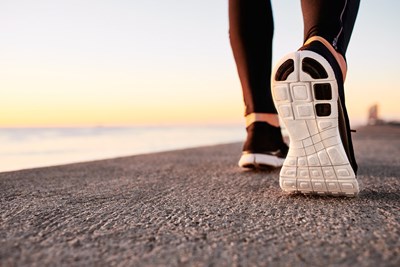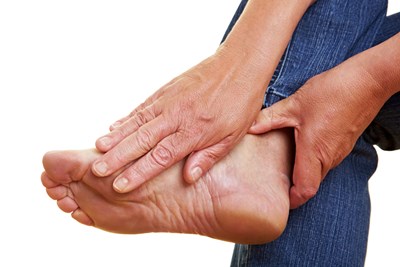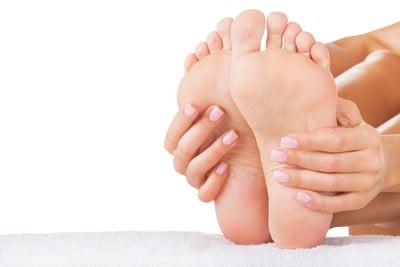Heel pain can happen to anyone. Feet are feet, and people are clumsy, and there’s always the chance of a strain or a tear or a fracture just from pure bad luck. Some people, however, should be extra careful in their choice of extracurricular activities, shoes, and other health factors.
While there are definitely a few things that can lead to heel pain later on, some conditions often result in foot pain, like fibromyalgia, peripheral neuropathy, or osteomyelitis. While it can be difficult to avoid it when disorders like this come into play, there are still things you can do to keep heel pain at bay.
Athletic Activities
Running and jumping are two activities especially inclined to wear on the achilles tendon (the tendon that runs down the back of the ankle to the heel) and plantar fascia (band of tissue running from the end of the heel to the base of the toes). However, any strenuous activity can lead to painful damage. The warm up and cool down periods of physical activity are just as important for the feet as for any other part of the body.
Don’t go beyond the bounds of what your feet are comfortable with; wear shoes that are going to provide support (in the heels and the arch especially) and keep your foot gear in good working order. If the heel is worn out, there’s no shock absorption to help alleviate hard landings.
Foot Malformations
Unless you’re in a podiatrist’s office, when you hear “flat feet” it’s usually in a movie, and someone is getting turned away from the army. But flat feet cause more problems than you know. Specifically, heel pain. In fact, all the little weird ways your bones and ligaments come together that aren’t perfectly formed can cause your foot to twist, turn, and pull in ways it isn’t supposed to, leading to tendinitis, plantar fasciitis, and all sorts of other painful things. If you know (or suspect) something’s funny in your feet, talk to a doctor about getting special footwear or insoles to help alleviate some of the tension and pain.
Obesity
A healthy lifestyle makes a big difference in a lot of ways. Plantar fasciitis in particular can be instigated by obesity, because of the extra strain on 150 bones and tissues in the feet. What’s more, if you aren’t getting enough nutrients for all the other bones and muscles in your body, your feet probably aren’t getting enough either. Make sure to eat a balanced diet. Exercise is crucial, too. While overdoing it can be just as hazardous to your heels as being overweight, keeping the feet flexible and strong, including them in the cool down and warm up, and taking good care of them can go a long while to healthy heels.
Improper Footwear
Yes, wearing high heels makes your calves look sexy, and sure flip flops are great for throwing on in the summer time. But what are they doing to your heels? There’s virtually no support and nothing to absorb the shock when your feet hit the ground. That’s not to say you have to wear shoes that are made for comfort and not style all the time, but it does mean that certain activities demand a certain sort of shoe.
Additionally, shoes that are too small can push on the heel and help cause tendinitis, and shoes that are wearing out (especially in the heel) stop doing what they were made to, and start causing foot pain. Wear running shoes for running, walking shoes for walking, the right size, and new shoes when the old ones start going to hell. Your feet will appreciate it, and you run less risk of developing a whole myriad of foot problems that can be avoided.




